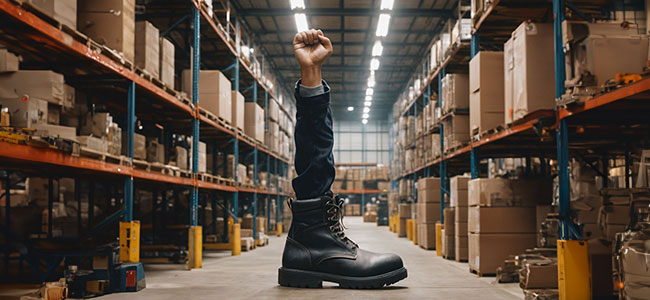
Power to the People
Taking safety footwear beyond standard compliance
- By Janelle Kinnaird
- Nov 08, 2023
The Occupational Safety and Health Administration (OSHA) requires you to provide employees with personal protective equipment (PPE) when used to comply with OSHA standards. Compliance is critical to avoid warnings, fines and sanctions.
But is minimal compliance enough to keep your employees safe?
Since PPE is critical in every work environment, let’s break it down. From fit to style and hard hat to footwear, it is personal. If the product does not accurately fit each individual, its protection is compromised and could actually result in additional safety issues. If your employees are unable to choose a product they like and feel comfortable in, they won’t wear it. And if you don’t have a process in place to manage knowing what they wear, you could be ignorantly out of compliance — and just waiting for the preverbal shoe to drop.
Let Them Own It
One of the basics of a positive, effective safety culture is to empower employees to feel like they have a say in their own well-being. Break free of a black-and-white world of rigidly enforcing the rules as the only solution. Instead, embrace the colors of competence, good training and personal ownership.
Hiring quality workers means they not only meet or exceed the skill level needed for the job but also know how to think and manage their environment independently. Workers have greater awareness to their surroundings and should be responsible for preventing any accidental or long-term physical hazards that could occur and should be trained and encouraged to have that power.
Employees want this power. With the training and knowledge of their job and environment, the freedom to decide, act and react on what is best for their own safety and their co-workers’ safety, regardless of cost consequences, results in a safer work environment they want to return to every day.
When the Shoe Fits
While the goal of PPE is protection from accidental injury, there has been recent positive noise around the importance of accurate fit to ensure safety and prevent unnecessary issues.
Science and research have proven that ill-fitting work shoes that workers are in for five or more hours on their feet will cause significant harm to their entire body. Over the years, the industrial workforce has seen a rise in diagnosed foot issues such as plantar fasciitis and tendinitis as well as knee and back pain — all of which various studies say could be attributed to improperly fitting footwear that misaligns the body, making it more susceptible to wear and tear injuries. The wrong fit could also constrict blood flow, causing fatigue that leads to distraction errors and injuries.
This article originally appeared in the November/December 2023 issue of Occupational Health & Safety.